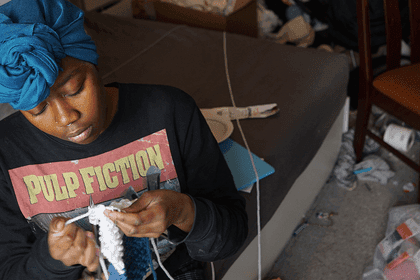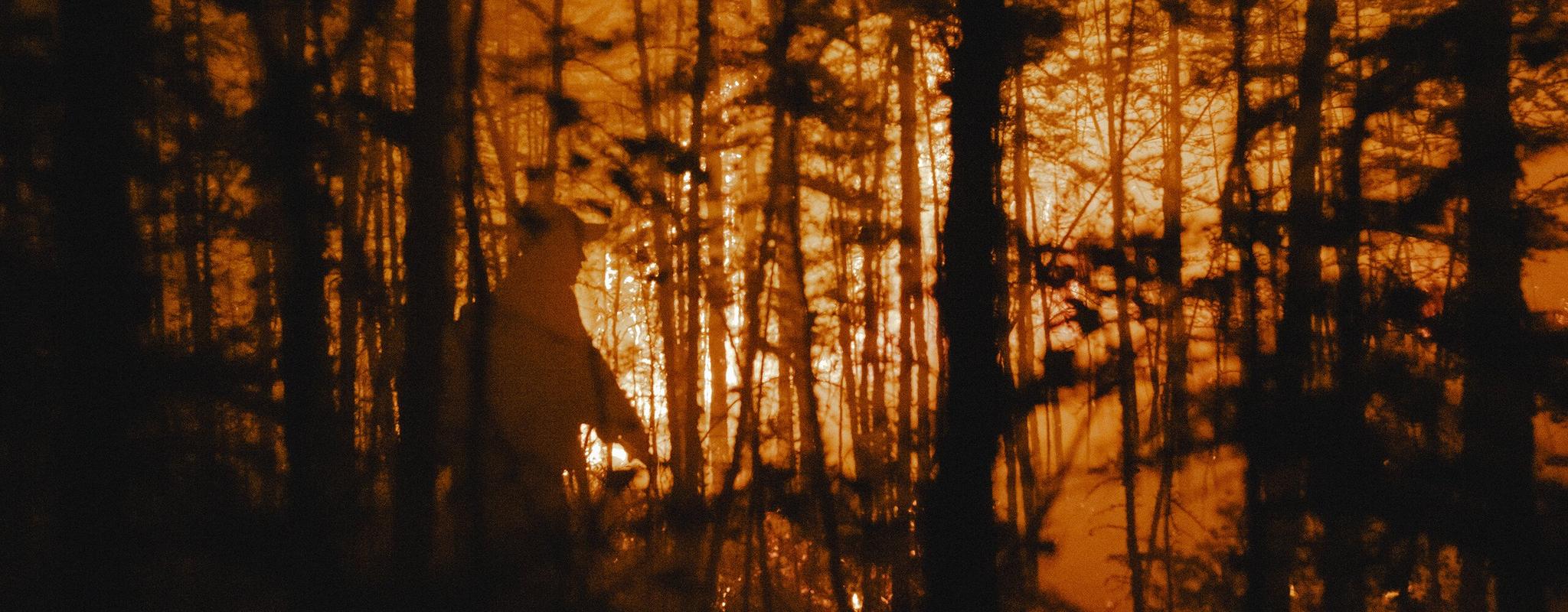
Global heating and human health – what’s the damage?
We know that the world is heating up, but what dangers does this pose for our health? How are people working to reduce these risks? The Wellcome Photography Prize commissioned three photographers from three different countries to each create a body of work to explore this.
Stay up to date
Sign up for emails to get the latest news about the Wellcome Photography Prize, including when the next round will be opening.
As our planet gets hotter, the effects on human health will get worse. Infectious diseases that thrive in hot climates are spreading further. Food production and the safety of water supplies are being affected. The trend towards urbanisation is accelerating, with implications for pollution and respiratory conditions. And more extreme heatwaves can have devastating effects on our bodies.
These changes are different in different parts of the world – so we asked to see what’s happening where the photographers live. What are the local health problems caused by global heating? And what are people doing to cope with these changes or reduce their scale to protect current or future generations?
Content warning: graphic imagery
Cuidantsiqmi
Florence Goupil
Huaraz, Peru
Click images to open gallery
3,511 metres above sea level, surrounded by the snow-capped mountains of Huaraz, the Wari people in Llupa are facing an environmental disaster that is directly affecting their physical and mental health.
Climate change has impacted the natural stability of the area, manifested first by a massive thaw, then by long droughts due to lack of rain and by off-season extreme cold that damaged agricultural cycles and endangered the Wari’s food sovereignty.
According to the Peruvian Health Ministry, in the Ancash region there is a high rate of undernutrition, with at least 28% of children under the age of three having anaemia – and the situation has worsened since the pandemic.
Despite the difficulty of living in a territory with scarce rainfall and dryness, the Wari do not think of leaving their lands. The Huaraz valley is their ancestral land and they have nowhere else to go. Alone in the midst of an environmental catastrophe, they will continue to devote their knowledge and affection to their Apus, the mountain spirits, and to the land they love and will never abandon.
“If there is no food, what are we going to do?” asks Victor Vargas, a Wari elder. “Where are we going to go? Somewhere else? There won’t be space for us. No matter what happens we will die here.”
Florence Goupil is a French and Peruvian documentary photographer and National Geographic Explorer based in Cusco, Peru. Her work is primarily focused on human rights, the environment and the living memory of the indigenous people of the Amazon and the Andes in Peru and Latin America.
Her work has been exhibited at ICP, Photoville and the Bronx Documentary Center. She is a regular contributor to UNICEF, The Washington Post, Liberation, and Le Monde, and her work has been published in Polka Magazine, The British Journal of Photography, Fisheye and Atmos, among others.
Her work has been awarded numerous prizes including winner of the Nouvelles Écritures award from the La Gacilly festival in France, honourable mention from POY Latam as Ibero-American Photographer of the Year and nominee for the Leica Oskar Barnack Award. She has received grants for her work from the National Geographic Society, the Pulitzer Center and Getty Images.
If the River dies
Isabella Moore
Mardoowarra (Fitzroy) River, Australia
Click images to open gallery
The Mardoowarra (Fitzroy) River is the lifeblood of the Kimberley region of Western Australia. The River is threatened by extensive development proposals from the agriculture and mining industries within the River’s catchment area. This inspired the formation of the Martuwarra Fitzroy River Council, an alliance of Traditional Owners from the different language groups connected to the River.
One of these groups is the Nyikina people, who have lived in symbiosis with the Mardoowarra for more than 60,000 years. Nyikina Elder Linda Nardea, and her son Kimberley Watson speak of how their people read Country like a book. Since colonisation, they’ve witnessed extractive industries slowly rewrite the ancient stories of their land and waters.
The Nyikina people refer to health and wellbeing as Marboo-joonoo Liyan. They understand that their Marboo-joonoo Liyan is intrinsically connected to Country. They witness how symptoms expressed through Country are connected to their own body, and how diseases we feel are also felt by Country. Linda says if “the land die, we die, the river die, we die. When we see those sorts of things happen, we get sick. The sickness shows in our body because we see bad things happen to our land.”
Kimberley says, “you look after Country, Country look after you”. With the ongoing climate crisis, the Nyikina way of being inspires us to question how we relate with our ecosystem. Are we willing to change how we treat Country? Whether we look at it through the Nyikina or the Western lens, if we don’t make that change soon, Country dies and so do we.
Isabella Melody Moore is an Australian and Peruvian photojournalist based in Sydney, Australia, on Gadigal Lands. She specialises in collaborative journalism practices with communities who have experienced misrepresentation in the media.
Her work has appeared in publications like The New York Times, The Guardian, The Observer, The Monthly and The Financial Times. Currently a National Photographic Prize finalist (2023), Isabella has been a Moran Contemporary Photographic Prize finalist (2011, 2018) and twice an Olive Cotton Award finalist (2021, 2023). She has received commendations from the Journalism and Education Research Association of Australia for Best Photojournalism (2020) and Best Reporting of Indigenous Affairs (2022).
Isabella is an active member of Women Photograph and Diversify Photo, and has a Master’s in Advanced Journalism (UTS, 2022) and a BA in Cultural Studies (Macquarie University, 2008).
The Kingdom of Winter
Nanna Heitmann
Yakutia, Russia
Click images to open gallery
The Kingdom of Winter is heating up. Yakutia, a remote and vast region in Russia’s Siberian far east, reaching north into the Arctic Circle, is one of the coldest inhabited places on earth. It’s sometimes called the Kingdom of Winter. But Yakutia is quickly getting hotter.
For years, Arctic temperatures have been rising rapidly, faster than in the rest of the world. Even by those standards, the heatwave that roasted northern Siberia in the summer of 2020 was shocking. Thawing permafrost, huge wildfires, catastrophic floods and mosquito plagues are some of the dangers people in the region are experiencing more and more.
The town of Verkhoyansk is more than 400 miles farther north than Anchorage in Alaska. It topped 100 degrees Fahrenheit last summer, the hottest temperature ever recorded in the Arctic Circle. Verkhoyansk is surrounded by dense forests, where wildfires are now so common that the nights are no longer dark. The effects on the community’s health and ways of living are severe.
Nanna Heitmann travelled to central and northern Yakutia to see how the daily lives of the Yakut people have been heavily affected by the rising temperatures.
Nanna Heitmann was born in Ulm, Germany, and is based in Moscow, Russia. She covers current events and pursues long-term projects that often focus on the way people respond to and interact with their environment.
She has been published by National Geographic, Time and M Le Magazine du Monde, among others, and contributes to the New York Times and New Yorker. Her visual journalism has been awarded numerous prizes, including the Olivier Rebbot Award for her work on Russia's Covid experience and a World Press Photo Award for her story on forest fires.
Heitmann became a Magnum Photos nominee in 2019, an associate member two years later and a full member in 2023. She joined the agency on the strength of two bodies of personal work that both deal with issues of isolation. ‘Weg vom Fenster’ [Gone From the Window] focused on the inhabitants of Germany's last operating coal mine. ‘Hiding From Baba Yaga’ involved Heitmann following one of the world's longest rivers from the Republic of Tuva northward through Siberia, photographing the lives of people living on the remote banks of the Yenisei River.

